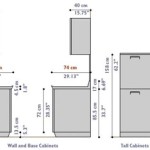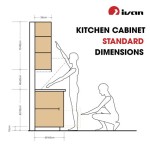Do Upper and Lower Kitchen Cabinets Need to Line Up Together?
When designing a kitchen, it's essential to consider the layout and arrangement of your cabinetry. Two important questions that often arise during the planning process are: Do upper and lower kitchen cabinets need to line up together? And how can you create a cohesive and visually appealing design?
In most cases, it is recommended to align upper and lower kitchen cabinets vertically. This creates a clean, streamlined look and ensures that the overall design is visually balanced. By aligning the cabinets vertically, you can establish a sense of symmetry and order in the kitchen, making it appear more spacious and organized.
However, there are exceptions to this rule. In certain kitchen designs, it can be beneficial to stagger the upper and lower cabinets. This technique can create a more dynamic and unique look, adding visual interest to the space. Staggering the cabinets can also allow for more flexibility in storage and appliance placement.
If you are considering staggering your upper and lower cabinets, it's important to do so intentionally and thoughtfully. Plan the layout carefully, ensuring that the staggered cabinets do not obstruct access to appliances or create awkward spaces. Consider using contrasting colors or materials to highlight the staggered design and create a focal point in the kitchen.
Here are some additional considerations when deciding whether to align upper and lower kitchen cabinets:
- Kitchen size and layout: In smaller kitchens, aligning the cabinets vertically can help maximize space and create a more cohesive look. In larger kitchens, staggering the cabinets can add visual interest and break up the monotony of a long wall of cabinets.
- Cabinet style and design: The style of your cabinets can influence whether you align or stagger them. Traditional cabinets often look best when aligned vertically, while more modern or contemporary cabinets can lend themselves well to being staggered.
- Appliance placement: Consider the placement of appliances, such as the refrigerator, oven, and dishwasher. Aligning the cabinets vertically can create a more seamless integration between appliances and cabinets.
- Storage needs: If you have a lot of items to store, aligning the cabinets vertically may provide more storage space. Staggering the cabinets can create nooks and crannies that can be used for storing smaller items or displaying decorative objects.
Ultimately, the decision of whether to align or stagger upper and lower kitchen cabinets depends on your personal preferences and the specific design of your kitchen. By considering the factors discussed above, you can determine the best approach to create a visually appealing and functional kitchen that meets your needs.

Upper Cabinets Don T Line Up With Lower Help

Do The Upper Cabinets Need To Line Up With Base Ehow

How To Install Kitchen Cabinets

How To Extend Kitchen Cabinets Up The Ceiling Thrifty Decor Diy And Organizing

Upper Kitchen Cabinets A Guide On Top Cupboard Storage Design

How To Install Kitchen Cabinets The Home Depot

Kitchen Cabinet Sizes What Are Standard Dimensions Of Cabinets

How To Extend Kitchen Cabinets Up The Ceiling Thrifty Decor Diy And Organizing

Upper Kitchen Cabinets A Guide On Top Cupboard Storage Design

69 Stylish Kitchen Cabinet Ideas
Related Posts








